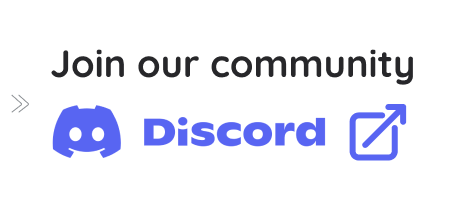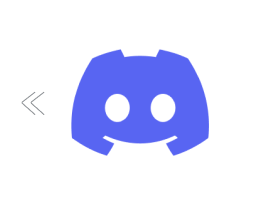What’s The Difference Between GPT-3 and GPT-4?
The Natural Language Processing industry is expected to be worth more than $43 billion by 2025. This is hardly surprising given the myriad applications of NLP models and their potential to transform how we live and do business.
GPT-3 is one of the most popular and durable language models on the market today. GPT-3 was the biggest language model accessible, with over 175 billion parameters and application cases ranging from customer care to fraud detection. Now there's a new player in town, and it appears to be giving GPT-3 a run for its money.
GPT-4 is bigger than GPT-3 and is projected to be capable of more complicated functions. So what precisely is it, and how does it vary from GPT-3? This article will look at the major distinctions between GPT-3 and GPT-4, as well as the potential impact of the former on business.
What is GPT?
GPT, or Generative Pre-Trained Transformer, is a text-based AI model trained on huge volumes of publicly available data.
Based on input, the natural language processing paradigm is intended to create human-like text. As a result, it is useful for a wide range of applications, including question answering, translation, text summarization, code creation, and categorization.
GPT, like other NLP models, makes predictions based on a large number of factors. During 2018, OpenAI, the firm behind GPT, has released four alliterations of the language model, the most recent being GPT-4.
GPT-1 had 117 million parameters, followed by GPT-2, which had 1.2 billion parameters. In GPT-3, the number of parameters increased to 175 billion, making it the biggest natural language processing model for quite some time.
The next version of OpenAI will feature around 100 trillion parameters, making it up to 100 times more powerful than its predecessor. To put this in context, the fourth-generation GPT will contain nearly as many parameters as the human brain's neuronal connections.
What is the purpose of GPT-4?
The fourth-generation GPT, like its predecessors, will have a wide range of applications in industries like as content production, marketing, and software development. Here are some examples of how you can apply the language model:
Text creation
It can create human-like content in a variety of scenarios, including essays, poetry, marketing communications, and much more, as a language model. All you need is a suitable prompt to get the model to create whatever you can think of.
Responding to inquiries
Google handles an average of 40,000 inquiries per second, or 3.5 billion queries every day. However, some of these inquiries go unanswered since Google, as a search engine, can only provide results that are related to the terms you input. You must also search various websites to find the solution you want.
The language model simplifies search queries by directly addressing questions. The model can deliver exact responses with extensive explanations regardless of the intricacy of your issue. When used in business, this functionality may dramatically enhance customer service and technical assistance.
Machine translation
There is a plethora of specialist language translation software available, however some of it is inaccurate. Because the model has been trained on enormous datasets of previously translated content, it can produce more exact translations. It also takes things a step further by breaking down difficult concepts into easily digestible outputs. GPT, for example, can transform legal language into a more intelligible context.
App development
An app takes from 7 to 12 months to produce, including the design and development stages. With only a brief explanation of what the developer aims to achieve, GPT may simply produce the code required for app development.
What's the difference between GPT-4 and GPT-3?
According to OpenAI, GPT-4 will outperform its predecessor in terms of human-like text production, language translation, summarization, and other language and code generating tasks in a more diverse and adaptive manner.
These are some of the key distinctions between the two:
Parameters
Despite its many features, the third generation GPT only contains 175 billion parameters. This is still a lot of parameters when most natural language models nowadays don't even have half as many.
The language model will include about a trillion parameters, according to OpenAI, the startup producing GPT-4, making it substantially larger than its cousin. This will allow it to deliver more precise findings. It may even be faster than its competitors.
Performance
GPT- is one of the most performant language models on the market. With simple inputs, it can generate human-like prose, entire code, and even engaging articles, tales, and poetry. The language model, however, has proven inefficient in interpreting some words, such as colloquial idioms and sarcasm.
Just having additional parameters means that GPT-4 may have much superior performance capabilities than its predecessor. It should be able to handle more complex jobs, recognize sarcasm and colloquial language, and overcome some of the limits of previous GPT models.
Application possibilities
Since its debut, the third generation GPT has seen a wide range of applications ranging from content production to chatbots and research in the disciplines of natural language processing and machine learning.
Since it is larger and more efficient than its predecessor, GPT-4 is projected to have a greater range of applications, particularly in text production, code generation, and creative writing.
The model's OpenAI creators want to increase the performance of different applications such as chatbots and virtual assistants, as well as overcome some of the constraints provided by the prior model in such applications.
Accuracy
The increased amount of factors, together with the developer's past GPT model knowledge, may make the fourth generation of GPT more accurate than its predecessors. These enhancements will primarily focus on imitating human behavior and voice patterns in response to input cues.
The increased level of optimization will eventually make the model more accurate in reading human intents, resulting in considerable error reduction.
Misinformation susceptibility
One of the most difficult difficulties for NLP models is erroneous training data, which leaves them vulnerable to supplying incorrect information.
To address this issue, OpenAI applies Reinforcement Learning from Human Feedback (RELF) algorithms. This approach is used by human trainers to fine-tune AI-powered NMLP models via supervised fine-tuning.
Finally, this reduces the model's vulnerability to disinformation and the generation of poisonous or biased material.
Less reliance on prompting
If you've used the 3rd generation GPT before, you'll appreciate the need of prompting. If you don't utilize the correct prompt, the outcome may be disappointing. The model may even generate an unrelated response.
One of the main hopes of users for the new model is that it will be less reliant on excellent prompting, providing them greater flexibility in expressing their intent and trust that the language model will comprehend them.
OpenAI has already shown success in constructing language models capable of understanding user intent. ChatGPT, one of the company's most significant offerings, is quite good at understanding intent. In addition to ChatGPT, the business invested in InstructGPT, which is very good at creating human-like language that is clear, simple, and easy to follow.
What impact will GPT-4 have on businesses?
GPT-4 has the potential to dramatically transform the commercial environment. Based on previous GPT model performance, the fourth-generation model is expected to have a significant impact on several areas of business, including improving customer service and interactions, developing effective sales and marketing strategies, content creation and management, business process automation, and much more.
The language model may also give insights and forecasts based on corporate data, allowing businesses to make educated decisions and gain a competitive advantage.
To summarize, GPT-4 is ready to transform the corporate landscape as well as some parts of daily living, such as answering questions and translating languages. The language model might potentially be quicker and more accurate than its predecessors, thereby expanding its possible use cases. Nevertheless, because OpenAI maintains much information about the model's development under wraps, most information available is speculative.
Along from GPT-4, there are a slew of other fascinating developments in the realm of generative AI research, ranging from enhanced picture and video production to virtual assistants who can converse naturally with people. As these technologies improve, they have the potential to revolutionize sectors and open up new economic possibilities.
The Worldwide AI Hackathon is leading the charge towards a new era of language models and AI breakthroughs. Gifted participants utilizing state-of-the-art technology suggest a promising future for the generative AI domain. The emergence of novel language models, set to transform our interaction with machines and communication with each other, seems inevitable, given the tremendous potential of this event.










